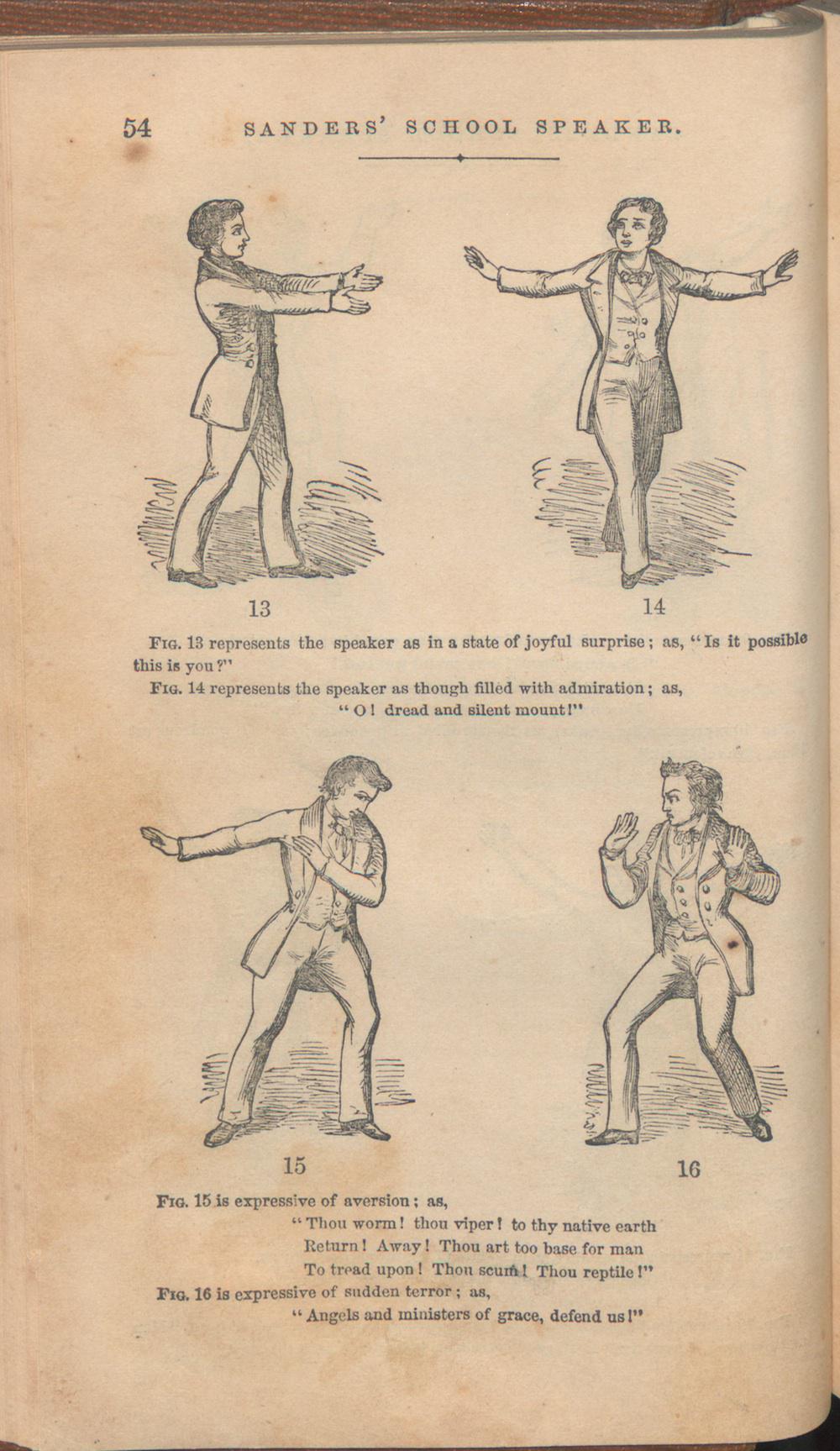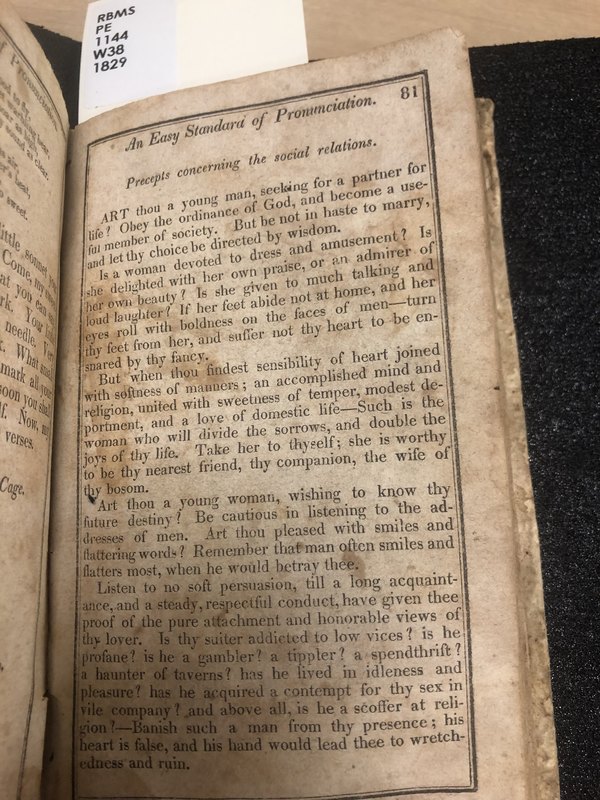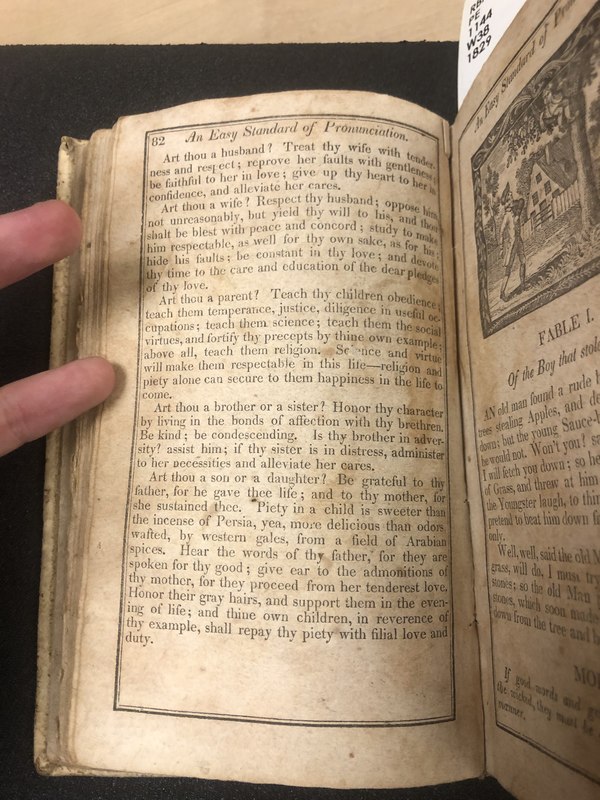Precepts Concerning the Social Relations
This section titled "Precepts concerning the social relations" prefaces the section of fables, maybe to be used to explain the various positions of certain characters to come in that section. Nonetheless, this section is filled with Webster constructing strict social boundaries for the reader. He directly questions the reader in attempt at aligning them within one of the normative identities he sees. And while this section is filled with narrated events in the discrete relationships, I chose to focus on areas where he does this mainly through class, gender, and places them in terms of religion.
Noah Webster linguistically constructs the "young woman" as a place to put meaning onto, that lacks meaning in herself alone. The woman does not have meaning in her own right, but meaning is placed onto her through the acts of her partner. If a woman gets an education, this reflects upon the husband foremost, according to Webster. The husband has to deal with the expected and presupposed faults of his wife, while the wife is expected to submit her will to his.
The children, however, are explicitly told to be pious above all. The prioritization of religion, more specifically Christiantiy, is subsequently used to legitimize the subordination of peoples outside the subjectively defined normative. Christianity informs ideologies of morality, which also serves to reinforce its legitimacy and authority. As a text for Children, this section would be particularly salient. Webster engages with the reader directly by asking questions and the pronoun "you". He constructs these identities in terms of relationships. Both members of the social relationship maintain a certain positionality, and this is how Webster constructs differing social identities for both genders in different roles and relationships. Interestingly, if the target of this book is younger children, the passage on the relationship between a marriage couple would not carry the same salience for children. However, this both positions marriage (and procreation) as one of the expected roles in life. Webster's moral essentialism exposes and helps the reader understand not only their position in life as they currently read the book, but where there life is expected to head if "on the good path". Another section of this narrated event is the acknowledge of the luxury and exoticism of the east is "wafted, by Western gales". I thought this was an interesting point in the metaphorical use of wafted, and by a natural force of wind. Webster seems to conflate good morals with a naturally occuring social order of Western superiority. This also continues to reinscribe the everlasting trope that the West has property over all knowledge and peoples. Children's piety is constructed in a superior position to the lure of the East, defining Western superiority in religion against and in opposition to the material goods of the East.
This confirms a facet of Bonfiglio's argument. While he does not make an explicit references to class, Webster does centralize power of standardization in the hands of a few. Bonfiglio argues that what is considered both good and normative is defined by the top, and influential figures like Webster play an important role in this process, and attached to the bottom. And while there is limited reference to class or race, there are nuanced configurations of the White Christian male as the normative, the power to define the normative, and the ability to constantly reinscribe this hegemonic system. In similar ways, the book is focused on educating men, and while woman are included, Webster either again, reinscribed tropes already materially present in society, but associates these tropes in terms of specifically language.


